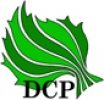General Plant Attacker of the month August: Candidatus Phytoplasma ulmi (Elm Phytoplasm)

The pathogen: a phytoplasm
The Elm Phytoplasm is a bacterium that cannot be cultivated artificially. It typically grows in the bark vessels or the phloem of trees.
The scientific name for this single cell pathogen is 'Candidatus Phytoplasma ulmi'.
Phytoplasms cause a very wide range of symptoms (discolourations, deformities, phyllodes, rosette formation, witches' brooms, etc.) which can easily be confused with viral diseases or errors in the nutritional balance.
What indicates a phytoplasmic infection in the tree?

The name of the disease clearly refers to the discoloration of the leaves in case of an infestation. The normally dark green foliage typically takes on a greenish-yellow to intense yellow colour. Contrary to yellowing due to nutrient problems, the young leaves do not discolour first.
The disease used to be called elm phloem necrosis. The bacterium grows in the phloem of the tree, causing necrosis and discoloration from below (first in the lower parts) of the tree, which can be determined by removing the bark.
How do the phytoplasmas spread?
The most important way of spreading the elm phytoplasm are vectors of the type of pricking sucking insects. These mainly include cicada-like insects.
The white-striped elm cicada Scaphoideus luteolus is indicated as the main vector, but does not occur in Europe. Also a number of other cicada-like insects and spit bugs (Philaenus spumarius) that are widespread here have since been confirmed as vectors.
Trafficking and thus introduction of infected trees is an important factor in long-distance distribution.
Which plants are susceptible?
The phytoplasm that makes elms sick is extremely elm-specific. North American elm species (Ulmus americana, U. alata, U. serotina and U. rubra) are the most sensitive.
Our smooth (U. minor) and rough elm (U. glabra), are hybrids (U. x hollandica), as well as the flutter elm (U. laevis) are generally more tolerant of the pathogen.
Strongly related phytoplasmas that also belong to the so-called "Elm Yellows" group also affect Carpinus, (hornbeam), Alnus (alder), Vitis (grape) and Rubus (blackberry).
What can you do to prevent a phytoplasmic infestation?
- Select species and breeds that are less susceptible to the disease.
- For elm farms: monitor and control insect populations
- Remove weeds as well as possible
- Remove infected trees and replace them with other tree species, or at least with less sensitive elm species.
- Ask advice from cultivation supervisors or ILVO
Only 1 observation in Belgium so far

Because this phytoplasm had a quarantine status, the ILVO and CRA-W conducted an extensive survey in elms in various biotopes in Belgium in 2017-2019. This was done as part of GAPHANNEX, a status determination project financed by the FPS VVVL. Sampling was carried out in street trees, parks, forests, along waterways and in private gardens. An intensive survey was also carried out in botanical gardens and arboreta on the elm collections for the Belgian Plant Sentinel Network (BEPSN, financed by the FPS VVVL) as part of a European Euphresco project (the International Plant Sentinel Network). Only 1 elm, an Ulmus minor subsp. canescens, was found in Belgium infected with 'Ca. P. ulmi'. For the time being, therefore, there is only one isolated observation in our region, although there are increasing reports of elms infected with the phytoplasm from neighboring countries.
 Diagnostic Centre for Plants
Diagnostic Centre for Plants